Post-Elon Musk’s takeover of Twitter, interest in other, similar social networking sites has spiked significantly. Some names may be familiar to you while others are completely new, but a quick search on Google Trends reveals that old or new, people are looking for the next, best microblogging platform.
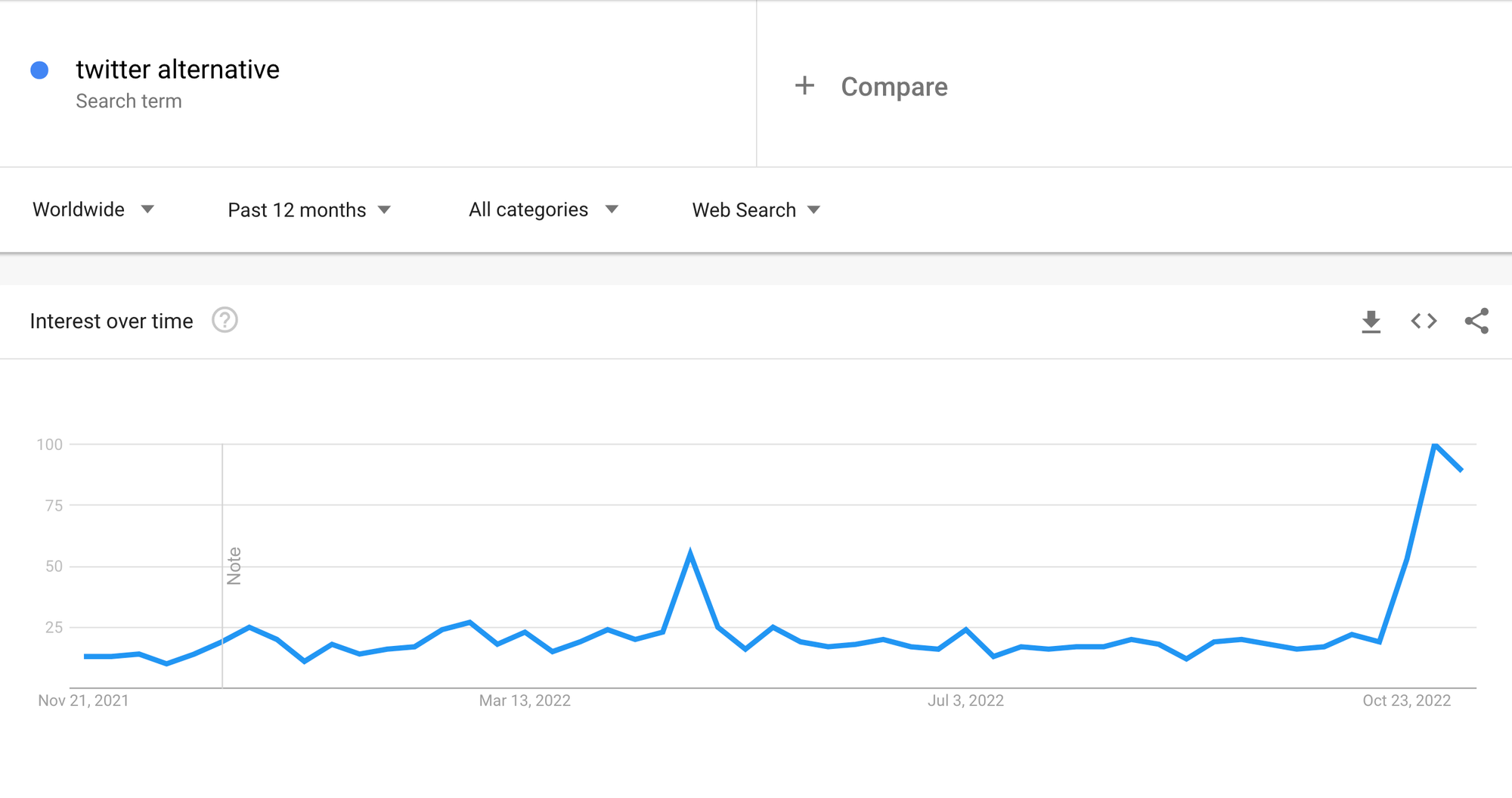
Tumblr’s one of those familiar names and a popular choice — actor Ryan Reynolds made a public move to Tumblr. But that’s not what we’re here for today. Instead, we’re introducing you to Mastodon, which many may not yet be familiar with, but is quickly rising in popularity.
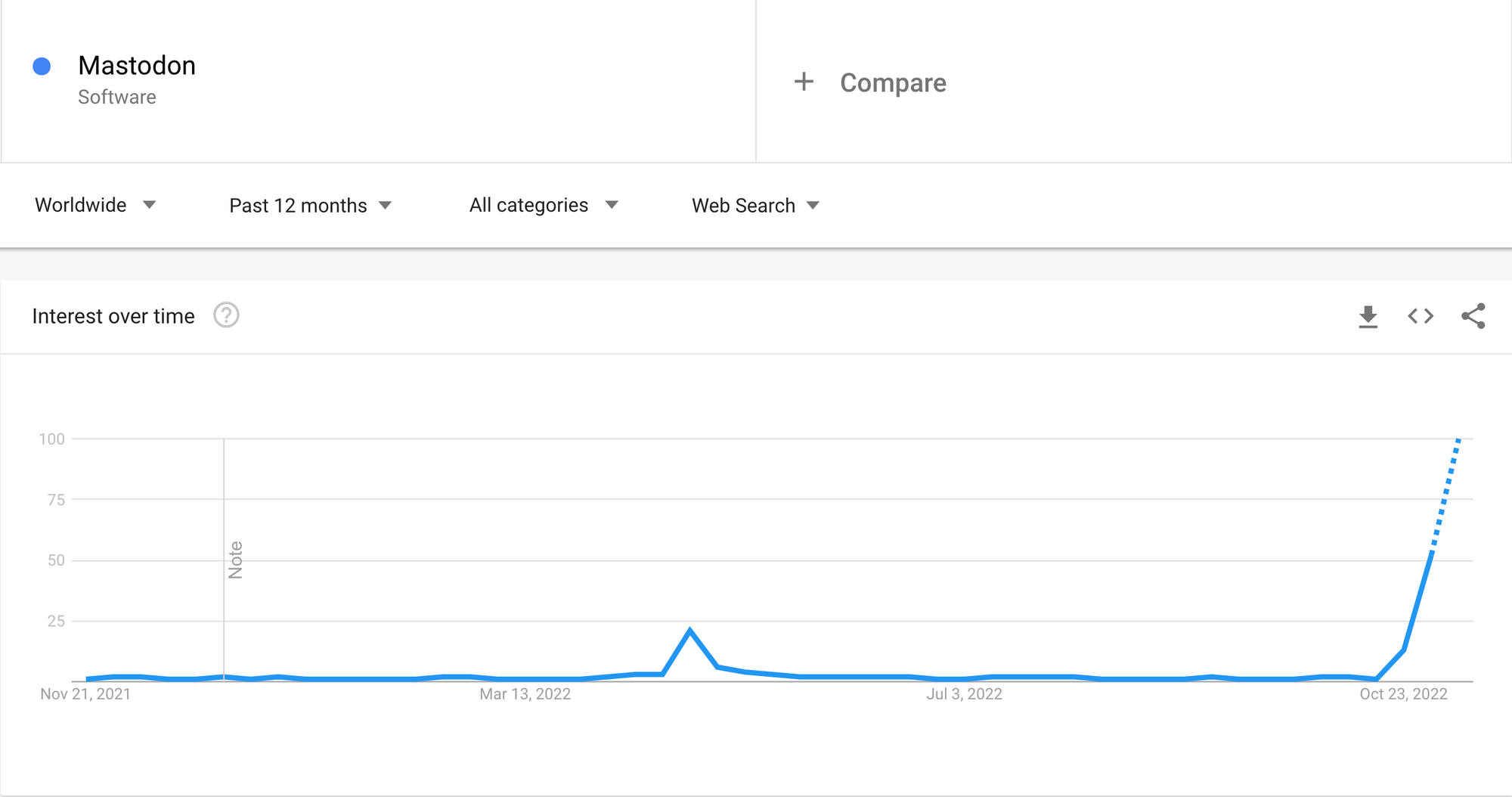
Mastodon, founded in 2016 by Eugen Rochko, is a microblogging platform that looks similar to Twitter on the surface but is more complex under the hood. In this article, we’ll walk you through what you need to know about Mastodon and how to set up an account.
What is Mastodon?
Mastodon is part of a collection of free, decentralized, and loosely organized group of servers referred to as the “Fediverse,” short for “federated universe.” As Mastodon user DJM kindly pointed out, "it's called the Fediverse because there's a universe of federated protocols, apps, instances, and tools that talk to each other."
Mastodon is an open-source platform, meaning anyone can set up a server and run a community if they wish to, similar to a forum or discussion board. The platform is self-described as a “federated network which operates in a similar way to email.”
Similar to Twitter, it offers microblogging capabilities, but while you can easily pinpoint some similarities to Twitter’s web and mobile applications, they’re not quite the same. A better (but still incomplete) analogy is Mastodon is what you get if you were to combine Twitter and Tumblr.
Instead of tweeting, you post, and if you share someone else's post, you've reblogged or boosted it. There are hashtags and lists, and you have up to 5,000 words to express yourself – as well as the ability to add GIFs, videos, and images.
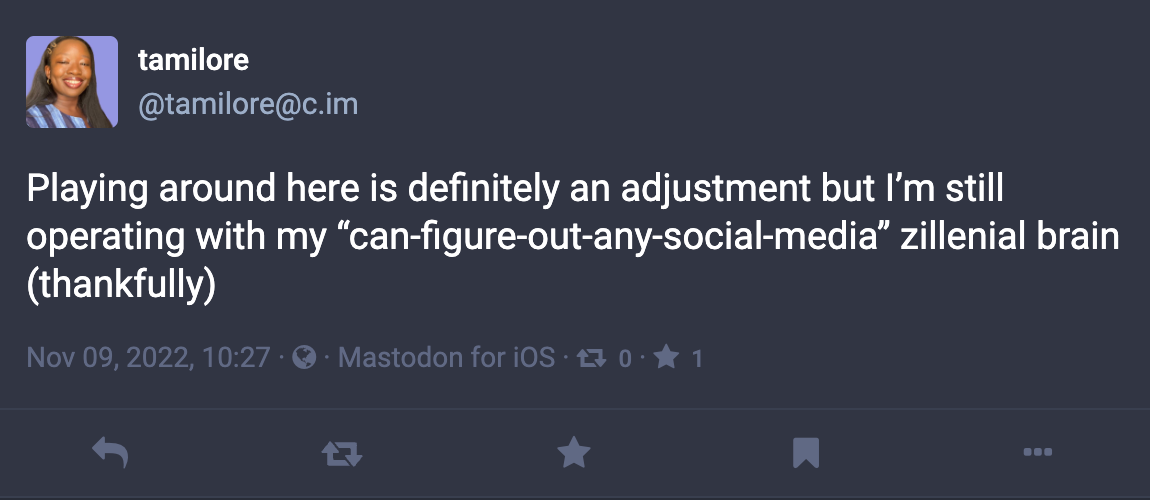
Your Mastodon handle includes your full identity, plus the server name. If you sign up for Mastodon via the most popular server – Mastodon.social – your address will be @[your username]@mastodon.social. But no matter which server you sign up with, you can communicate with users from any other server, just like how Gmail users email Hotmail users and vice versa.
If you want a checkmark alongside your name to prove that you are who you say you are, you don't have to pay anyone; instead, you add a link to a website that's under your control and that serves as verification. On Mastodon, you can also edit your posts (a much-requested Twitter feature) whenever you’d like and at no cost. And to tackle misinformation concerns, you will get a notification when a post you boosted/reblogged has been edited.
The biggest benefit of Mastodon is probably its extensive content moderation. Each server can decide its moderation policy and which servers it will communicate with.
"Mastodon" cannot suspend anyone. You were likely removed from a certain server by its owner or moderation team. Mastodon servers are run by users, not by a corporation like twitter is.
— Mastodon (@joinmastodon) November 10, 2022
Each host can set their own rules. You should familiarize yourself with them before joining.
How to set up a Mastodon account
While Mastodon is quite similar to email, it’s not as simple to set up. You have to find a server on your own (I’m on the C.IM server) to set up an account. Here’s a simple breakdown of how to get started with an account on Mastodon (from experience as a non-technical person).
Step 1: Join a server
You need to find the address of a server running the Mastodon software (called an Instance) that is accepting new sign-ups to join.
At Buffer, we chose the Mastodon World server, and you're welcome to join us there.
You can also out Mastodon's servers list for potential servers to join or where your current Twitter followers are hanging out on Mastodon with Debirdify (for security reasons, remember to revoke permissions when you’re done).
Users who can be discovered have usually added their Mastodon handle to their bio or profile on Twitter — you can also do this once your account has been set up.
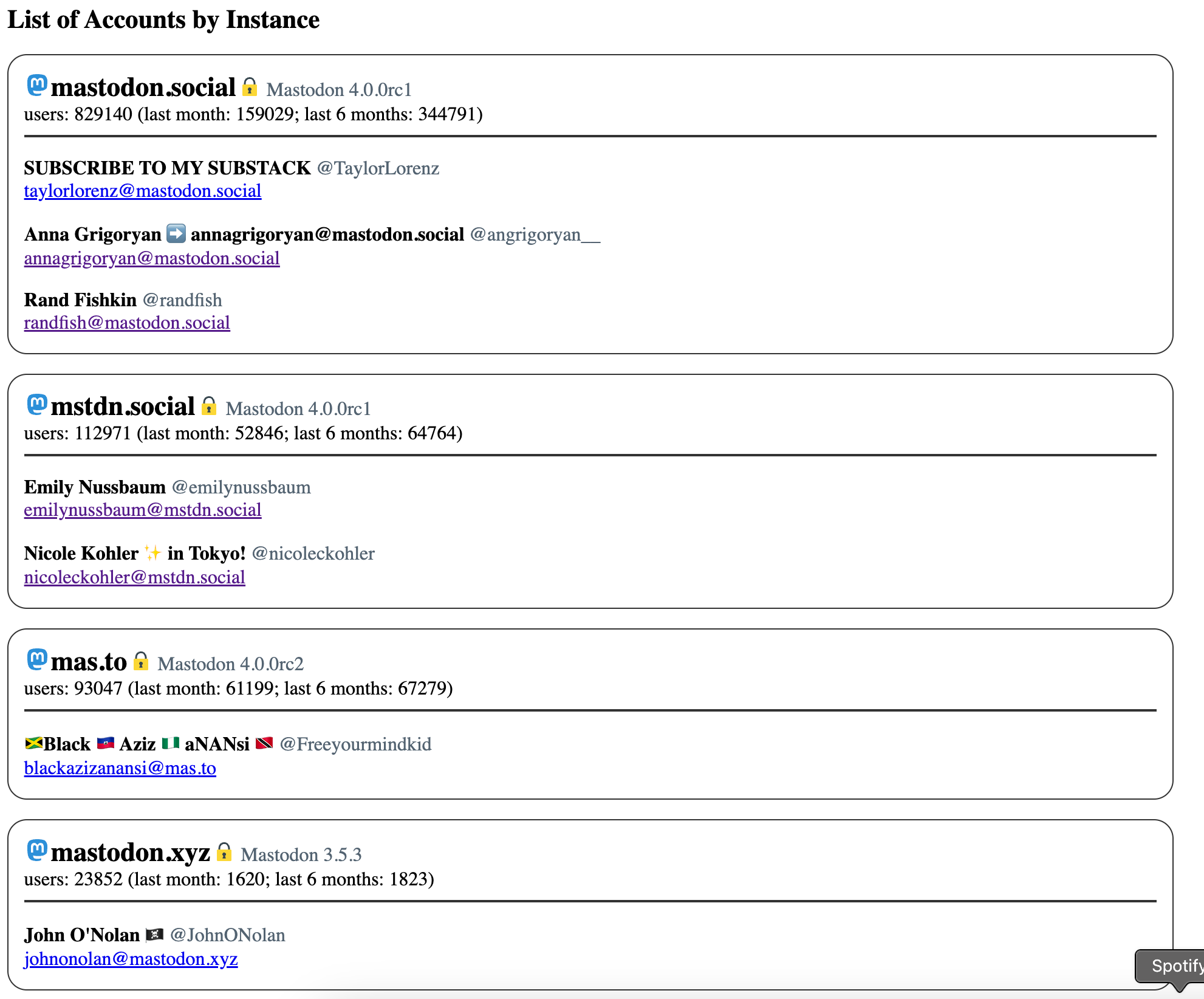
Fedifinder is another tool you can use which extracts the Mastodon handles of Twitter accounts you follow as well as those you've added to a list; you can import that list on Mastodon to follow all those accounts at once.
Alternatively, try going to the Mastodon activity page and looking at the list under the Instances heading. The entries at the top of the list are the most popular but may also take the most time to join.
If you’re worried about whether or not you’ll like a server, you can always move your account to a different server later.
Step 2: Sign up to your chosen Mastodon server
Once you identify an instance you would like to join that’s also accepting new members, fill in the form. You can reuse your Twitter ID or any ID you choose. I picked my name because I didn’t catch the Twitter train in time the first go-round. Here’s the sign up page for the C.IM instance on the web.
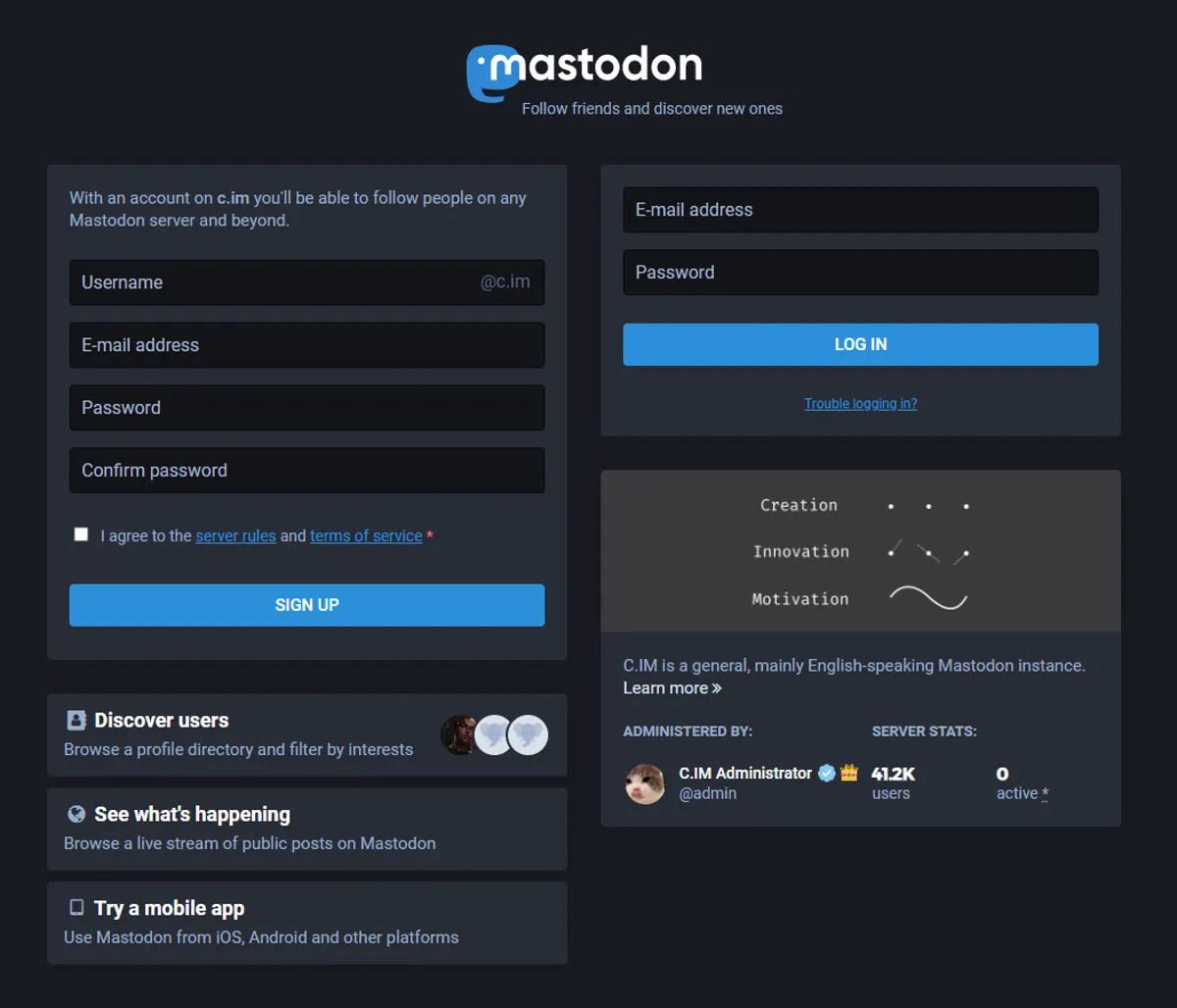
Click Sign Up and wait for the confirmation email. That could take anywhere from a few minutes (like mine) or several hours. With the surge in sign-ups, some people report never receiving the email to activate their accounts.
Once you have access, remember which instance you used. You'll need to enter that server's address when you sign in using a different browser or another mobile app. You can't use those credentials to sign in on a different instance.
You can create different profiles on different servers or choose to transfer your data from one server to another.
Step 3: Set up your profile
Make it easy for people to find you by filling out all available details. Once you've confirmed your account, use the Edit Profile button to add some details about who you are.
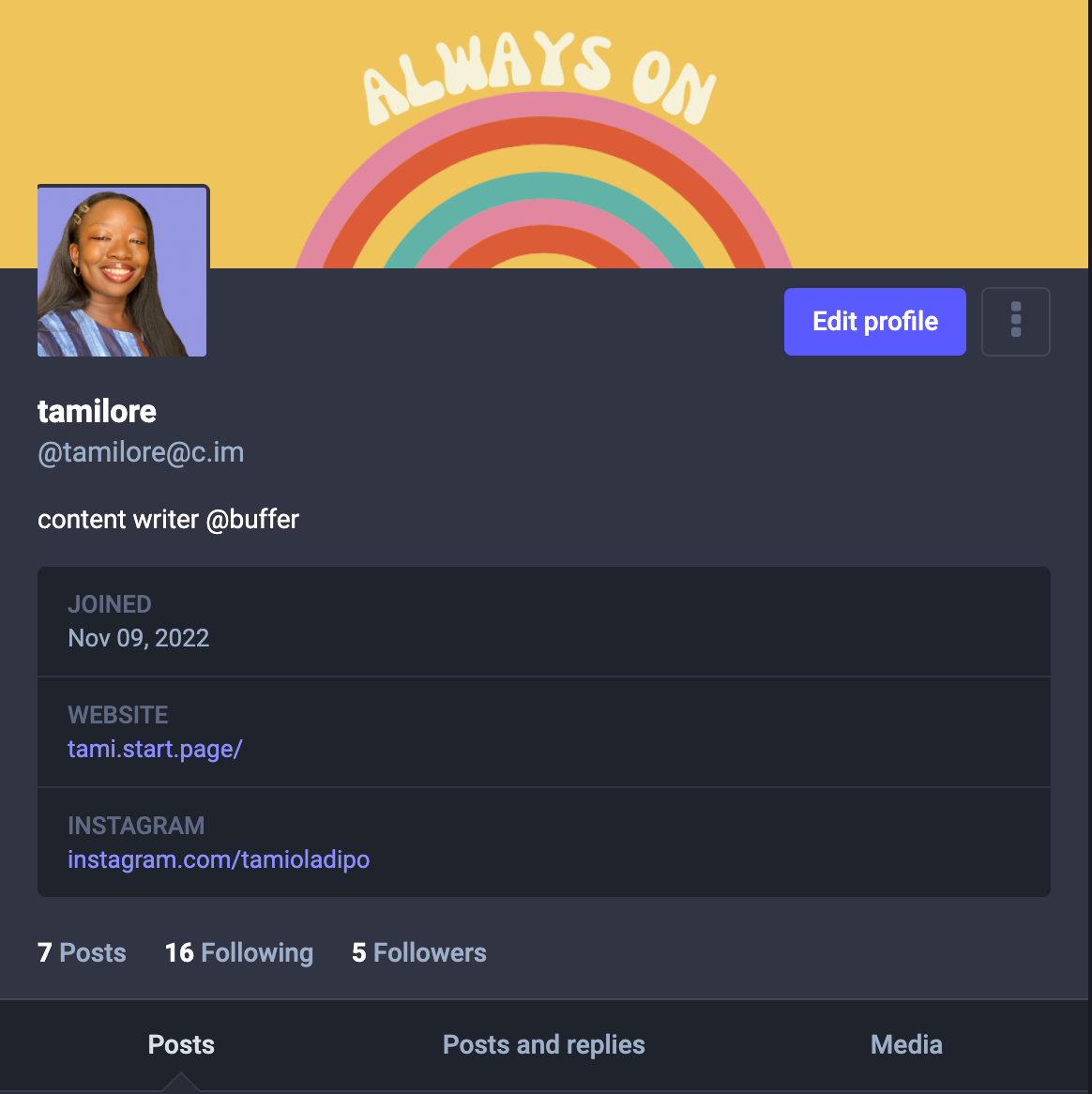
Fill in your bio and add a picture (or an “avatar” as it’s called in Mastodon) so that people will be able to identify you.
Finally, add your Mastodon handle to your Twitter bio. That will make it easier for people who know you from Twitter to find you in the new place.
Step 4: Start following people and engaging with the community
Start following people and engaging with the community. If you have Mastodon IDs for people you know are active, type that name in the search box to find their account and follow them.
Step 5: Introduce yourself.
Mastodon has very “first day of school” energy as everyone learns their way around the platform.
Give some background about who you are and your interests, then pin the post to the top of your profile. This helps people who find you online figure out if you're an appropriate follow for them.
Step 6: Find your friends.
You can use tools like Debirdify and Fedifinder to look for people who have shared their Mastodon handle on Twitter.
You can also check the hashtag #TwitterMigration and filter using “People you Follow” or look for lists made by people migrating to Mastodon.
What to consider before ditching Twitter entirely
It might be tempting to migrate to Mastodon and cut ties completely with Twitter, but you need to consider several factors – here are some of them.
- Mastodon hasn’t yet cracked the smooth sign-up flow of platforms like Twitter and Instagram. Adjusting to the technicality, user interface, lingo, and rules takes a while – not all your Twitter followers may want to jump on the bandwagon.
- Content moderation is taken very seriously in Mastodon servers — some even require content warnings for political content.
Mastodon may not replace Twitter, but at least it has better leadership.
— Alex Vranas (@breakdecks) November 5, 2022
Meet Eugen, CEO of Mastodon Social: pic.twitter.com/jerOT0asPg
- Mastodon is still growing: The platform is still hiring, and some users report long wait times before they receive confirmation emails and can set up their accounts. This means that even if your audience is willing to jump through the hurdles it takes to set up an account, they may not have access for a while.
Over 1 million people have joined Mastodon since October 27. Between that and those who returned to their old accounts, the number of active users has risen to over 1.6 million today, which, for context, is over 3 times what it was just about two weeks ago!
— Mastodon (@joinmastodon) November 12, 2022
- Messages aren’t encrypted, and server admins can see them, so it's best not to use them for any important or sensitive business. You also need to be careful about sharing private vs. public messages, as it's easy to get the two mixed up on Mastodon.
Before you make the jump, take the time to consider your audience, your content and whether you want to weather the Twitter storm or bow out while you’re ahead.
Think of Mastodon as an interesting new channel to explore
While Mastodon is gaining popularity at lightning speed (it’s almost always the first option on any list of “twitter alternatives”), we don’t think Twitter’s going anywhere just yet, and most social media professionals agree.
However, it’s worth getting to know how Mastodon works as an app separate from Twitter. Don’t treat it like Twitter, but as its own new, exciting space.
We have scheduling to Mastodon within Buffer, so you can sign up to Buffer for free and start planning out your Mastodon content today!
Try Buffer for free
190,000+ creators, small businesses, and marketers use Buffer to grow their audiences every month.




